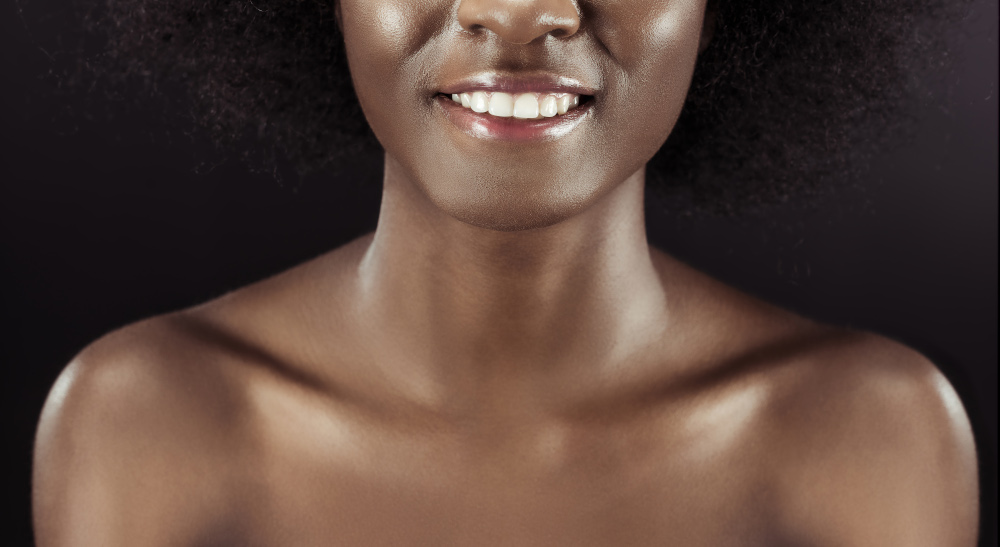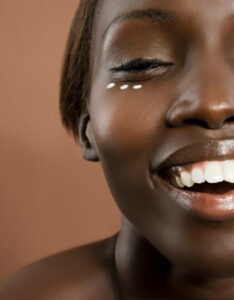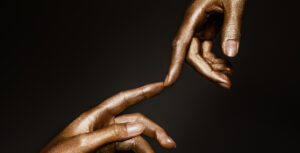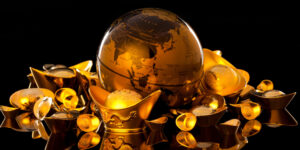
There are shades in South Africa that aren’t named on foundation bottles or paint cards. They are whispered into nicknames, sung into house tracks, implied in compliments, and embedded in jokes that aren’t really jokes. Colour here has never been just a matter of biology or beauty. It has always been a currency, exchanged in glances, assumed in privilege, and worn like jewellery that you didn’t buy but are expected to flaunt. There are girls who grow up knowing that their skin is close enough to gold to get them noticed, and others who know it will take more than good lighting to be seen. In South Africa, skin has value. Not just in how it feels or what it holds, but in how it shines, how light plays on it, and how the world treats it in response.
Ask anyone who grew up in a township or a suburb with deep silences, and they’ll tell you, shade isn’t just shade. It’s status. It’s suspicion. It’s the line between the girl who gets followed around in a boutique and the one who gets offered water while she shops. It’s in schoolyard crushes, family comparisons, music videos, and product packaging. The ideal isn’t just beauty, it’s a particular kind of beauty. The kind that comes with lightness. The kind that glows like money. Or, more accurately, like gold.
From skin-lightening creams stacked behind counters to Instagram filters that smooth and soften away the heat of real melanin, the value of shine has been internalised. Girls trade turmeric hacks on TikTok. Boys repost women with complexions that reflect more light than shadow. There’s a global algorithm that rewards golden skin over deep brown, beige over brick, honey over mahogany. In this environment, the colour of your skin isn’t just a fact, it’s a feature to be edited, curated, adjusted. It’s no wonder so many grow up believing their value is in how close they come to an ideal that was never set by them.
But this is not new. Colonisation, advertising, apartheid, all left behind a caste system of complexion. What’s modern is how quiet the conversation has become. Nobody says it outright anymore, but everyone knows. The better job, the better treatment, the better match on the dating app, it often goes to the girl with the glow. Even in spaces that scream diversity, colourism whispers. And it whispers in gold.
 You see it in bridal parties where the makeup artist hesitates before reaching for a darker foundation. You see it on the shelves of shops in Sea Point and Sandton, where the models on posters are just brown enough to be exotic, not enough to be uncomfortable. You hear it in compliments like “you’ve got such a nice tone” and “you’re lucky, you’re not too dark.” You hear it in the silence after a girl walks into a room and doesn’t get the same nod her lighter-skinned friend receives. And it’s not always cruelty. Sometimes it’s just conditioning. But the result is the same. A hierarchy built on hue. A price tag attached to pigmentation.
You see it in bridal parties where the makeup artist hesitates before reaching for a darker foundation. You see it on the shelves of shops in Sea Point and Sandton, where the models on posters are just brown enough to be exotic, not enough to be uncomfortable. You hear it in compliments like “you’ve got such a nice tone” and “you’re lucky, you’re not too dark.” You hear it in the silence after a girl walks into a room and doesn’t get the same nod her lighter-skinned friend receives. And it’s not always cruelty. Sometimes it’s just conditioning. But the result is the same. A hierarchy built on hue. A price tag attached to pigmentation.
And yet, the contradiction runs deep. The very same country that privileges lightness also worships the glow of rich, deep black skin in its art, its poetry, its protests. We chant “Black is Beautiful” while still hesitating to let our kids play in the sun for too long. We celebrate African queens on stage but choose Instagram filters that erase the very features we praise. There is no single villain here, just a thousand quiet agreements stitched into daily life, agreements that say gold is good, but only if it looks a certain way.
Still, there’s resistance. There always has been. There are girls reclaiming their shade, turning their melanin into metaphor, and wearing their skin like it was stitched from pride. There are boys unlearning years of inherited bias and choosing partners for more than complexion. There are influencers making raw, unfiltered content showing dark skin in all its oil, texture, and brilliance. And it’s not just politics, it’s personal. Because when you grow up being told you’d be prettier if you were lighter, you don’t protest for the newspaper. You do it for the mirror.
Sometimes gold is not a metal, not a bar, not a chain. Sometimes gold is how skin reflects the sun after you’ve moisturised with nothing but sheer butter and self-love. Sometimes it’s the laugh of a girl who used to hide from cameras, now front and centre with a bare face and full joy. Sometimes gold is the nickname “chocolate” said with affection, not pity. Sometimes it’s the glow that doesn’t come from lightning, but from finally believing that you don’t have to change to be seen.
And yes, skin tone still determines how you’re treated in boardrooms, in clubs, at border posts. But slowly, quietly, a new kind of wealth is being built, one not earned from proximity to whiteness, but from radical ownership of self. It’s not easy. The price is high. But in a country that has always tied gold to power, perhaps the most powerful thing a young person can do is say, this is my shine, and I will not trade it.
So call it what you want. Glow. Radiance. Undertone. Shade. Just know that in modern South Africa, it’s still gold by another name. And for many, it’s the first thing the world sees, and the last thing they want to compromise.



